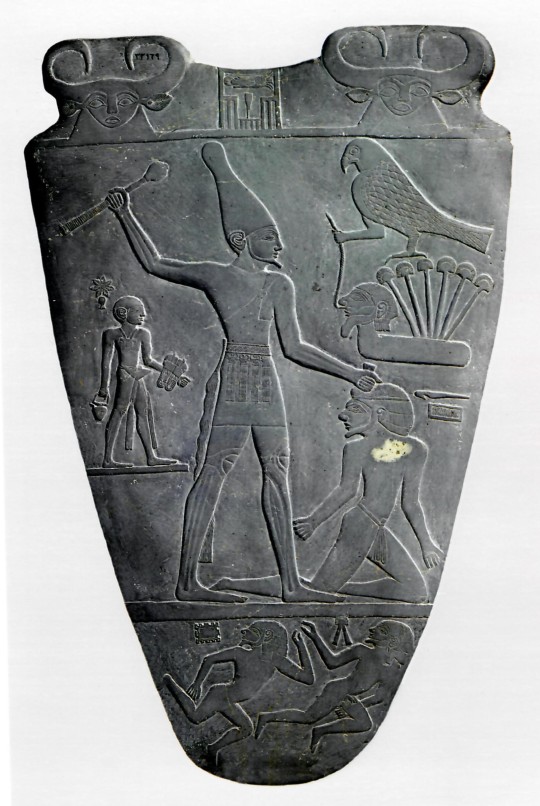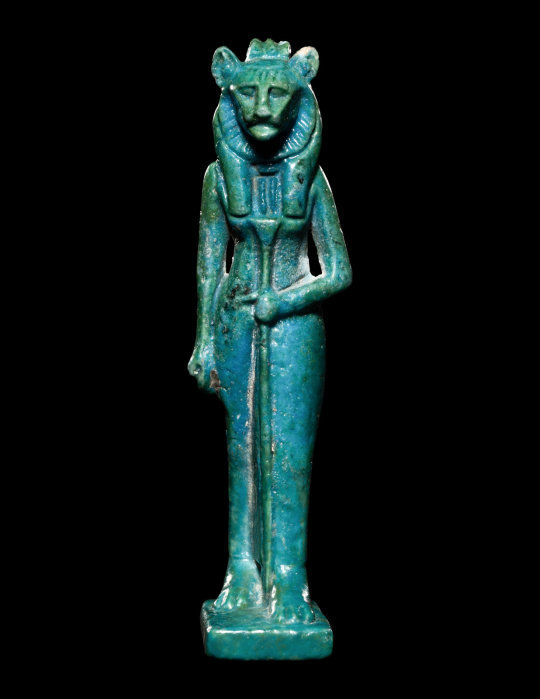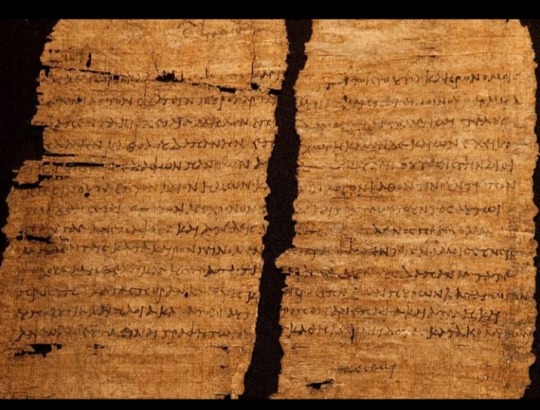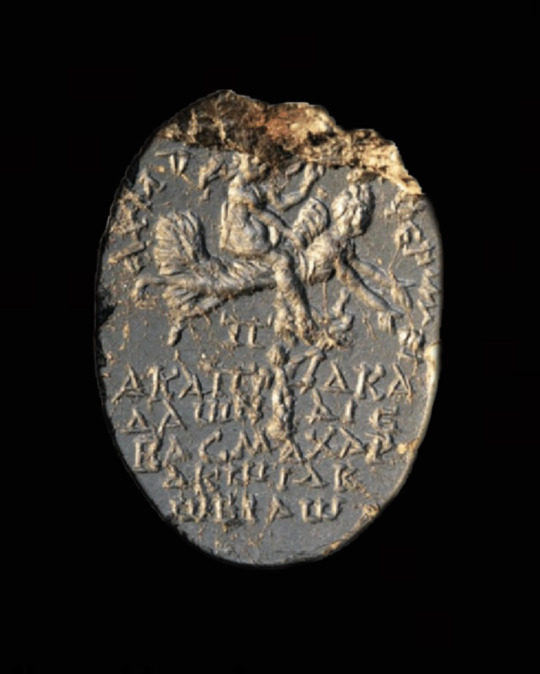veiledknowledge
5 posts
Don't wanna be here? Send us removal request.
Text

The verso of the Narmer Palette. Narmer, considered by many Egyptologists to be the first ruler of a unified Egypt, stands over a defeated foe and is about to bring his mace down on the foe's head. Narmer is shown here wearing the white crown (hedyet) of Lower Egypt, while on the recto he is depicted with the red crown (desheret) of Upper Egypt, perhaps symbolizing his unification of the two realms. Artist unknown; sculpted ca. 3200-3000 BCE. Found at Hierakonpolis (Nekhen), pre-unification capital of Upper Egypt; now in the Egyptian Museum, Cairo. Photo credit: Heagy1/Wikimedia Commons.
412 notes
·
View notes
Text

An Egyptian Faience Sekhmet Third Intermediate Period, 21st-22nd Dynasty, 1070-712 B.C.
635 notes
·
View notes
Text

This papyrus signed by Cleopatra grants tax exemption from sales of imported wine to the Roman businessman Publius Canidius, a friend of Mark Antony.
At the bottom, in a rare example of her handwriting, Cleopatra herself added the Greek word "ginesthoi," which means "make it happen."
—
Cleopatra VII Thea Philopator (70/69 BC – 10 August 30 BC) was Queen of the Ptolemaic Kingdom of Egypt from 51 to 30 BC, and its last active ruler.
686 notes
·
View notes
Text

The Museum of Egyptian Antiquities. Retrieved from: https://www.flickr.com/photos/laraz/2063179834/ on 07-07-2024
Sarcophagus of Prince Thutmose's cat Ta-Miu (translated as "she-cat"). This sarcophagus established that Thutmose was indeed the eldest son of Amenhotep III, since it provides his then current title 'Crown Prince.' Thutmose never succeeded to the throne as he died prematurely. This serves as reminder of how loved animals have been since ancient times.
55 notes
·
View notes
Text


CBd-4265. The Campbell Bonner Magical Gems Database (2010-), developed at the Museum of Fine Arts, Budapest, editor-in-chief: Á. M. Nagy. Retrieved from: cbd.mfab.hu/cbd/4265 on 18-06-2024.
This gem corresponds to PGM IV. 1716-1870; 1872-1927, also known as "Sword of Dardanos". The spell specifies the usage of a stone described as "breathing". Engraved on the front is Aphrodite sitting astride Psyche; and below, Eros holding a blazing torch, burning Psyche. On the back, Eros and Psyche embrace one another.
Inscription above Aphrodite's head: αχμα[γε ραρ]φερμει → unidentified voces. Inscription around Eros: π | ακαπακα | αδωναιε | βασμαχαρ | ακωιακ | ωβιαω → voces including Ἀδωναΐ, Ἰακώβ and Ἰάω. Inscription under Eros and Psyche: ηηηησσσσσσσ|ηηηησσσσσσσ → unidentified voces.
#occult#goeteia#hellenic polytheism#hellenic polythiest#hellenic paganism#hellenic pagan#helpol#greek mythology#greek magical papyri#sorcery#aphrodite#eros#psyche
1 note
·
View note